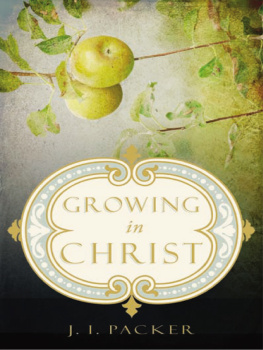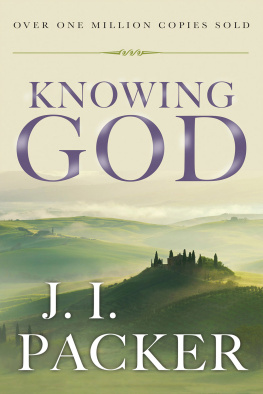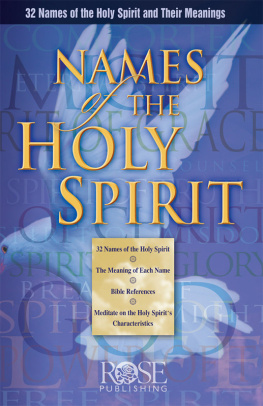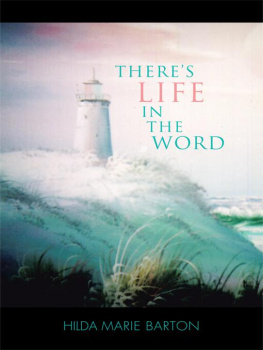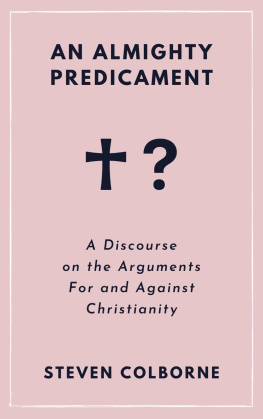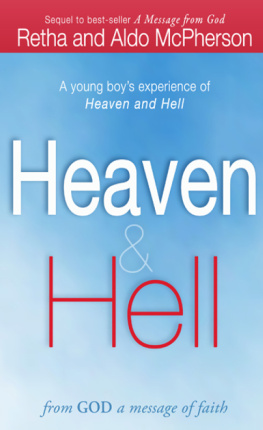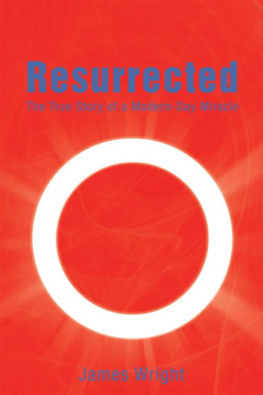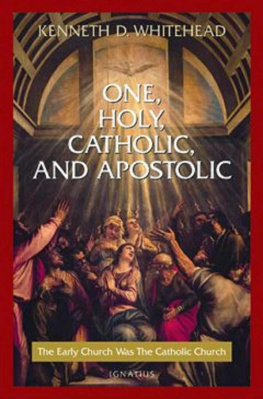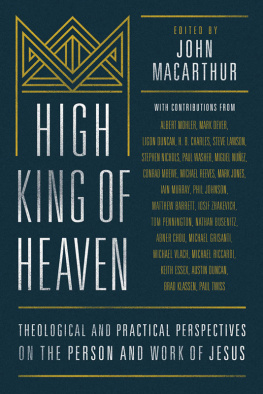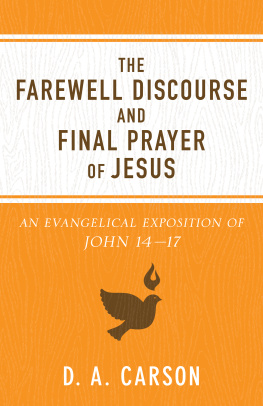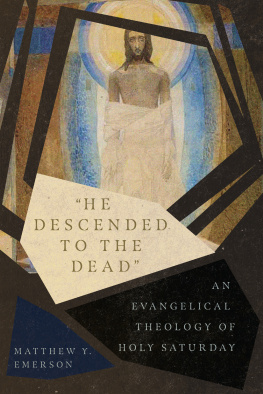

Growing in Christ
Copyright 1994 by J. I. Packer
Published by Crossway Books
a publishing ministry of Good News Publishers
1300 Crescent Street
Wheaton, Illinois 60187
Published originally under the title I Want to Be a Christian
All rights reserved. No part of this publication may be reproduced, stored in a retrieval system or transmitted in any form by any means, electronic, mechanical, photocopy, recording or otherwise, without the prior permission of the publisher, except as provided by USA copyright law.
Biblical quotations, unless otherwise specified, are from the Revised Standard Version. JB is the Jerusalem Bible, NEB the New English Bible, and Phillips is J. B. Phillips.
Cover design: Georgia Bateman
Cover photo: iStock
First printing 1994
First printing new cover, 2007
ISBN 13: 978-1-58134-852-1
ISBN 10: 1-58134-852-5
Printed in the United States of America
Library of Congress Cataloging-in-Publication Data
Packer, J. I. (James Innell)
Growing in Christ / J. I. Packer.
p. cm.
Originally published: I want to be a Christian. Wheaton, Ill. :
Tyndale House Publishers, c1977.
ISBN 13: 978-0-89107-794-7
ISBN 10: 0-89107-794-4
1. Apostles Creed. 2. Baptism. 3. Lords prayer. 4. Ten commandments. I. Title.
BT993.2.P33 1994 230dc20 93-50566
VP 16 15 14 13 12 1 10 09 08 07
14 13 12 11 10 9 8 7 6 5 4 3 2 1
To
Jim, Tom,
and Elisabeth
who by what they
are even more than
by what they say
share the strength they
have been given
Contents
The motive that led me to write Growing in Christ was to provide a resource book for study groups, and also a do-it-yourself study course for adults who have no access to such a group. From that standpoint, this is a companion piece to my book, Knowing God, which has been used widely for group discussion. It offers a series of quick, brief outlinessprints if you willwith questions and Bible passages for further study, covering the contents of the three formulae which have always been central in Christian teachingthe Creed, the Lords Prayer, and the Ten Commandments, plus Christian baptism. These three formulae deal with the Christians convictions, communion with God, and code of conduct respectively; baptism speaks of Gods covenant, Christian conversion and commitment, and church life. Baptism is put in its logical place as the second part of the book, straight after our study of the faith into which Christians are baptized, and leading on to reflections on prayer and obedience as expressions of the life of discipleship.
My hope is that the book may have a use in all churches where the historic faith is held, and to this end I have confined my material to matters which C. S. Lewis called (borrowing from Richard Baxter) mere Christianity. I have, therefore, sought to focus on the essentials of the faith, except for three inescapable references to historical misunderstandings of the Creed and the gospel by the Roman Catholic Church (misunderstandings which many Roman Catholic theologians now labor to transcend).
The sprints, which are written in as compressed and suggestive a way as I can manage, are only pipe-openers, to start you talkxi ing and thinking; for anything like a full treatment of each topic, readers must go on to the questions and the Bible study.
Many Christians today are uncomfortable with the word catechism, but they need not be. Catechism simply comes from a Greek word meaning make to hear and so instruct. From this word comes the English words of catechism (the form of instruction), catechumen (the person under instruction), catechumenate (the organized set-up for giving instruction), and catechize (a verb which originally meant instruct, though today it refers especially to a question-and- answer method of teaching). In Acts 8 we read how Philip instructed the Ethiopian eunuch; catechizing is just that process institutionalized.
Christianity is not instinctive to anyone, nor is it picked up casually without effort. It is a faith that has to be learned, and therefore taught, and so some sort of systematic instruction (catechumenate) is an essential part of a churchs life.
In the first Christian centuries there was a steady stream of adult converts and enquirers, and catechetical instruction took the form of lectures, given at their level. The Reformers strategy for revitalizing a Christendom that was ignorant of Christianity led them, however, to concentrate on systematic instruction for children. During a century and a half following Luthers pioneer LittleCatechism of 1529, literally hundreds of catechisms were produced, mostly though not exclusively for the young. Some of these were official church documents, others the private compositions of individual clergymen. The English Prayer Book catechism, the Heidelberg Catechism, and the Westminster Shorter Catechism are among the best known. Probably most Protestants today associate catechisms and catechizing exclusively with nurturing children, and would not think of presentations like C. S. Lewiss MereChristianity, or Billy Grahams Peace with God, or John Stotts BasicChristianity, or G. K. Chestertons Orthodoxy, as catechetical, because they are written for adults. But inasmuch as they are intended to instruct outsiders and establish insiders in fundamentals of the faith, catechetical is their proper description.
One great need today is a renewal of systematic Christian instructioncatechetical teachingfor adults. It need not be called that, nor need it take the form of rigid drilling in preset formulae, which is how old-time Protestants taught their children; but somehow or other, opportunities must be given for folk in and just outside the churches to examine Christian essentials, because there are so many for whom this is a prime need. Preaching often does not help them, for preaching ordinarily assumes in both speaker and hearers confident certainty about the fundamentals of the faith, and where this is lacking, sermons are felt to be remote and even irritating because of what appear as their unexamined assumptions. But the proper place for examining, challenging, and testing the intellectual ABCs of Christianity is not the pulpit, but rather the systematic instruction given in catechetical teachingat least, so Christian history suggests.
Modern educational theory sets great store by individual exploration, personal discovery, and group discussion, and there is no reason why todays adult instruction should not take this formindeed, it will be best if it does, provided we remember that Christianity has a given content and continuity, and is not an x, an undefined quantity, to be re-invented through discussion in each new generation! C. H. Spurgeons wicked story of the Irishman who, asked how he got on at the meeting of a small separatist church said, Oh, it was lovely; none of us knew anything, and we all taught each other, has a message for us here. One has known professedly Christian groups professedly studying Christian fundamentals on which this story would make a very apt comment. Guided study groups on Christian Basics, however, such as some churches known to me run year after year, constitute a genuine and much-needed renewal of the catechumenatethat is, the systematic teaching of Christian essentialsand I do not expect ever to find a church that would not benefit from their introduction.
Next page
